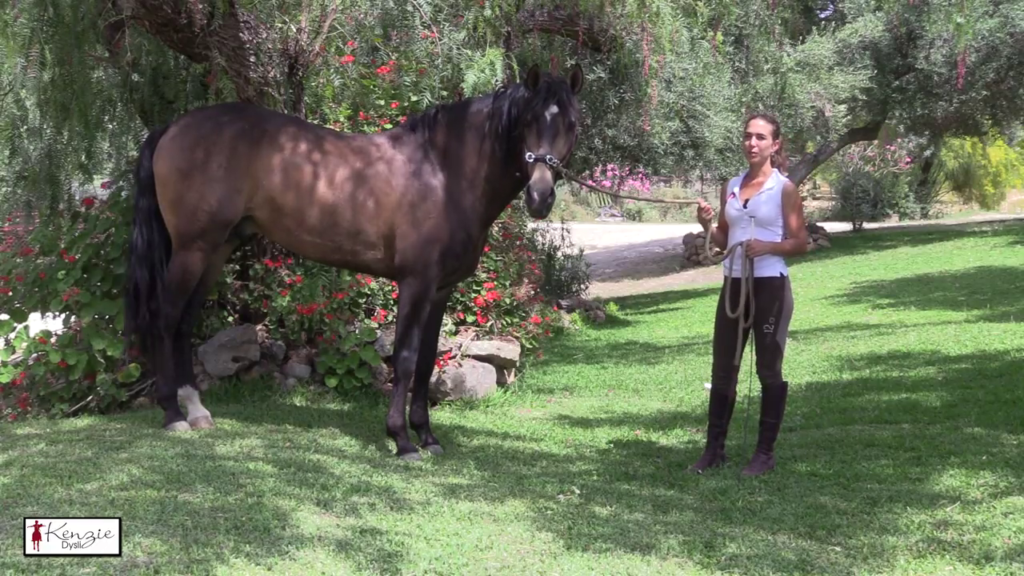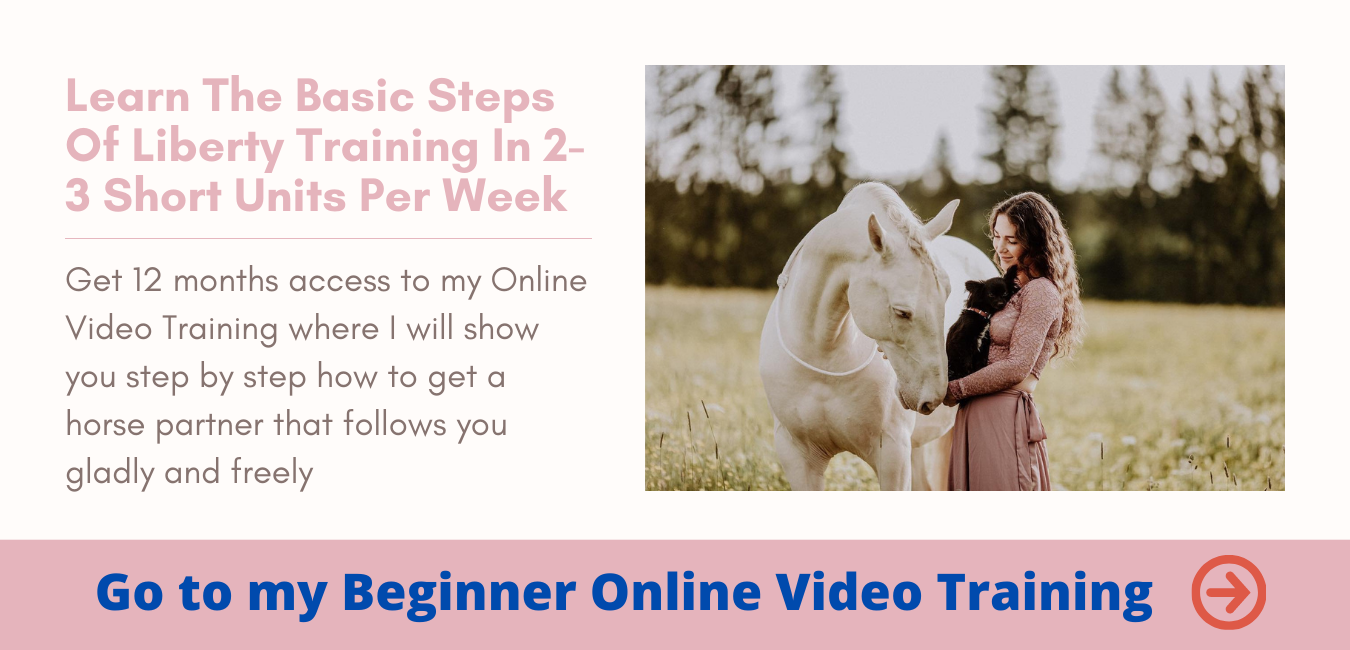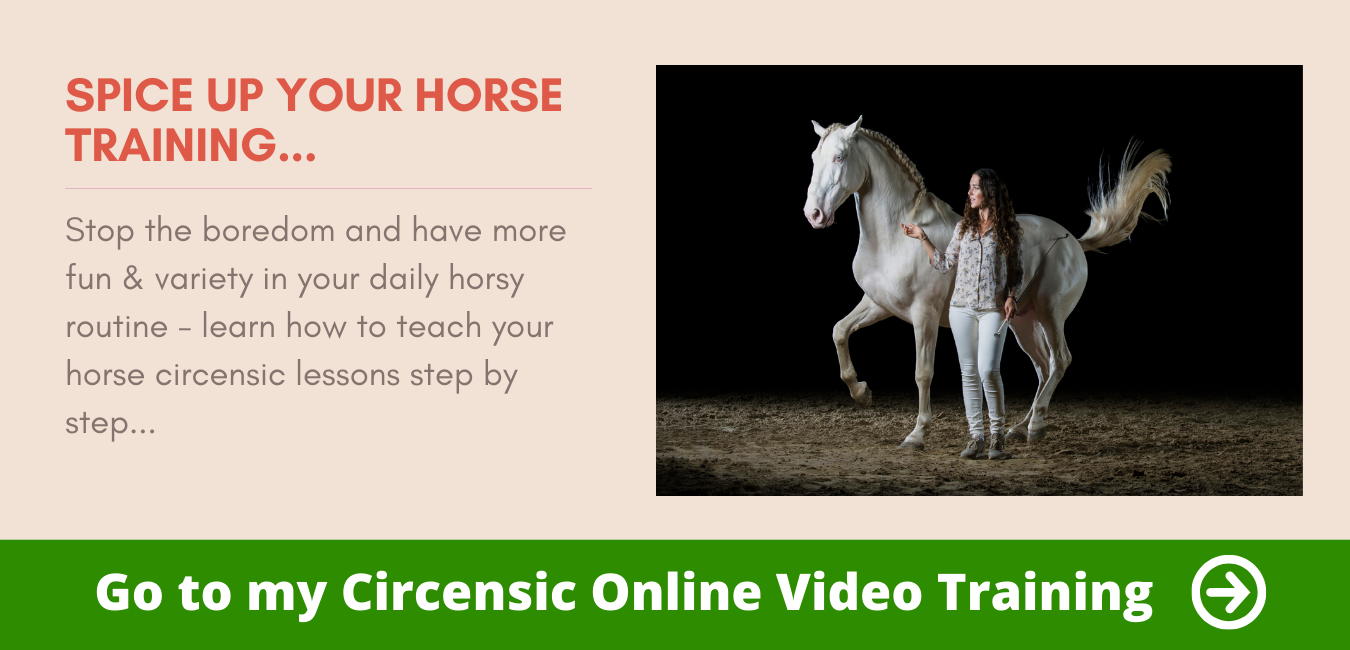I bet you know the situation: You take your horse for a walk.
Actually, you wanted to spend a wonderful time with your horse and relax and enjoy the nature?
On the square your horse is as calm as always.
But as soon as you leave the stable suddenly everything is different?
There are actually many horses that already know calmness training in all variations on the course at home.
And yet they are anything but relaxed in the countryside.
This can have various reasons, which I would like to discuss in the following.
Loneliness – the escape animal without herd
Lets analyse the situation step by step!
Next time, you might try going on a walk with a second horse. A second horse always meany safety.
For your horse and his basic instincts it is essential for survival to be in the protection of his herd.
But overall: This does not mean that you should not go for a walk with your horse alone.
But be aware that you will have to take over the job of the herd, if there’s no second horse nearby.
And you must be the leader all by yourself.
You have to give your horse the confidence that you have everything under control – in every situation. Your horse should have the feeling that you know what you are doing – and especially that you know exactly what you want.
This starts with the fact that you should not let your horse bump into you even when you are out in the countryside.
He has to respect your dance area – just as you respect his dance area.
As always this has nothing to do with aggression! Rather, it has to do with the consistency and reliability your horse wants from a good and safe “leading animal”.
Of course, this also includes the targeted use of your body language.
But that doesn’t have much to do with “shuffling along comfortably” ? Make sure that, as in free work, you walk upright, put your shoulders back and give off a feeling of calmness.
In difficult situations, which you feel uneasy about, it can help if you take a deep breath, smile or even sing!
This relaxes you – and therefore also your horse. And just between you and me: The more sloping the sounds, the funnier and more relaxed the atmosphere, right? ?
Working instead of boredom
Many horses now seem to tend to “wait” for a reason to be scared.
If your horse belongs to this category, it is worth not taking “dawdling walks” in which you stubbornly run straight ahead. Above all, you should keep such horses busy during your walk.
Depending on the ground conditions, you can also work wonderfully on the side walks, the shoulder walk or with backward walking in the terrain.
You should have prepared the first steps in the hall / on the place, because it is of course a bit more difficult outside without a board.
Circus lessons such as the Spanish Step, Shaking Your Head, the Mountain Goat or Attila’s favourite exercise of sticking the tongue out can also be wonderfully tested on the way.
Actually, there are no limits to your imagination – you should just make sure that for exercises like the compliment the ground really fits.
Pointed stones or branches can quickly spoil your horse’s enthusiasm for these lessons and it can even injure itself.
Also remember that a lot of trust is needed for these “exercises into the depths” – especially in an unusual environment. So don’t expect too much from your horse in these situations either!
Furthermore, you can also include the “surroundings” in your training.
For example, you can slalom with your horse around a row of trees, circle on a slope (very good for building muscles – especially on the hindquarters!) or jump over tree trunks.
Here, as everywhere else in horse training, common sense is simply required.
What can your horse do, what is allowed; the farmer is probably not happy if you simply run through his orchards ? and where could your horse injure himself.
If you take all factors into account, especially this diversified kind of training can be a lot of fun!
My horse is a chicken – What to do?
If your horse is really afraid of tractors, cows, rattling noises or similar things, there is only one thing that helps: Practice!
Because no matter what your horse is afraid of: With a little training you can make him understand that there is no reason to panic and that you have everything under control!
You have no other choice than to invite your horse’s “personal monster” into your training again and again in a controlled way ?
Because only if you confront your horse again and again with the fear trigger and show him that nothing is happening can he gain more self-confidence step by step.
The key to success is – as so often – a good charisma and the right timing.
First of all, you have to feel up to the situation.
You must not get heart attacks when you think that your horse might get scared, because your horse feels your stress and reacts accordingly more vehemently.
In this way you would build up each other and not be able to make any progress.
So before you get afraid of your horse, better look for a competent trainer to support you at home.
But if you are sure that you can control your horse in an emergency, you have to confront your horse again and again with the situation.
This does not mean that you are standing still somewhere in the field, staring at the cyclist until your horse explodes.
You can keep him busy while you do so. If he still gets scared, it is often enough to ignore the sentence to the side and continue training where you left off.
If your horse bumps into you, you should simply correct it in a determined and relaxed manner and then ask for the exercise again.
Of course, you should not miss out on compliments either!
It is enough if your horse stands still for a short time. It’s all about timing!
If you reward him not only with your voice or a touch but also with a goody, this has another positive effect: your horse chews.
Put simply, chewing sends an impulse to your horse’s brain that everything is fine.
Because when a horse is eating, it normally needs to be in a safe environment – when fleeing from a predator, it has little time to do so ?
By the way, it can also help if you “hunt the item” with your horse – as long as this is possible in a controlled way. (Note: You should not do this with animals like cows or sheep – especially not alone or without the owner’s permission!)
For example, if your horse is afraid of cyclists, you can follow your friend on the bike and the fear trigger can, so to speak, push her in front of you. Many horses quickly gain self-confidence in themselves, the situation – and of course also in you.
The gist of the matter
The most important thing to build up your training against fear in a meaningful way is actually to find the cause of your horse’s panic – and to find out to which category your horse belongs.
Only then you can start to work on the right places and make your horse a more relaxed companion.
Because it makes a difference whether your horse is scared “out of boredom” or because he is really scared.
And if he is really afraid, it helps to recognize whether he doubts you as a reliable leader or whether a certain object – or e.g. cyclists in general – makes him really panic for whatever reason.
Basically, as always: You know your horse the best – and your common path is individual.
These are only possible variations on how you can approach the training of your frightened horse in the field, but it is not a recommendation to choose this or that path.
Also in horse training many roads lead to Rome and especially you and your horse must feel comfortable with each other in training.
In my video I explain again how I would proceed with an example from my online intensive seminar.
[su_youtube url=”https://youtu.be/XWixnGcdJ_A”]
In this sense I wish you many more relaxing walks in the future!
Your Kenzie




